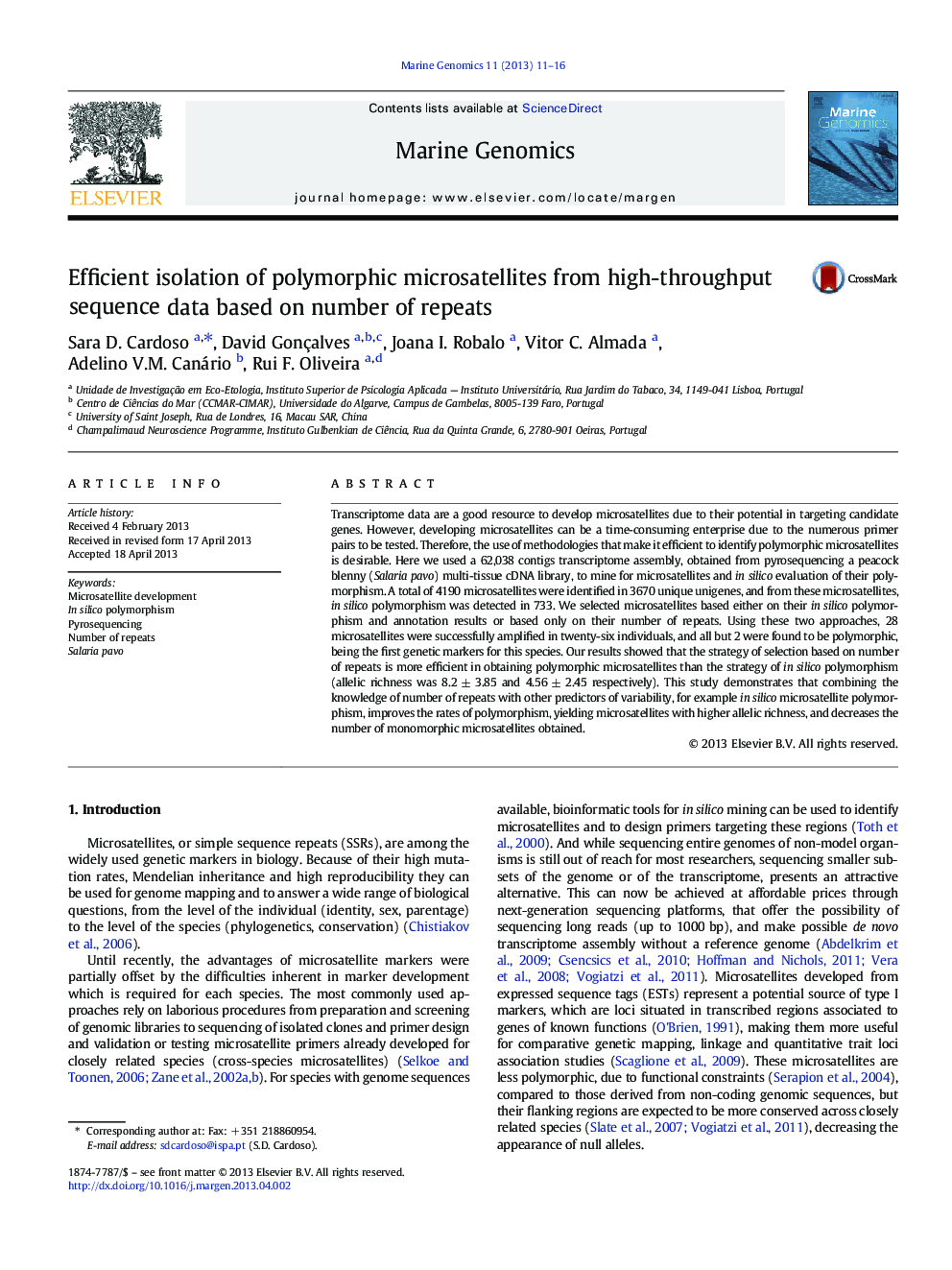| Article ID | Journal | Published Year | Pages | File Type |
|---|---|---|---|---|
| 2058185 | Marine Genomics | 2013 | 6 Pages |
Transcriptome data are a good resource to develop microsatellites due to their potential in targeting candidate genes. However, developing microsatellites can be a time-consuming enterprise due to the numerous primer pairs to be tested. Therefore, the use of methodologies that make it efficient to identify polymorphic microsatellites is desirable. Here we used a 62,038 contigs transcriptome assembly, obtained from pyrosequencing a peacock blenny (Salaria pavo) multi-tissue cDNA library, to mine for microsatellites and in silico evaluation of their polymorphism. A total of 4190 microsatellites were identified in 3670 unique unigenes, and from these microsatellites, in silico polymorphism was detected in 733. We selected microsatellites based either on their in silico polymorphism and annotation results or based only on their number of repeats. Using these two approaches, 28 microsatellites were successfully amplified in twenty-six individuals, and all but 2 were found to be polymorphic, being the first genetic markers for this species. Our results showed that the strategy of selection based on number of repeats is more efficient in obtaining polymorphic microsatellites than the strategy of in silico polymorphism (allelic richness was 8.2 ± 3.85 and 4.56 ± 2.45 respectively). This study demonstrates that combining the knowledge of number of repeats with other predictors of variability, for example in silico microsatellite polymorphism, improves the rates of polymorphism, yielding microsatellites with higher allelic richness, and decreases the number of monomorphic microsatellites obtained.
